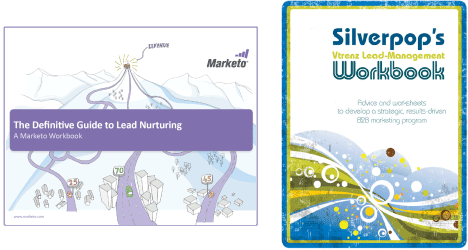 Would you like to learn how Lead Nurturing can turn more of your leads into revenue? On a single afternoon in New York City, Silverpop brings together several expert speakers to discuss Holistic Lead Nurturing strategies. The agenda covers B2B marketing trends, marketing infrastructure, nurturing dialogs, campaign development and implementation advice. Speakers include Adam Needles (Silverpop), Jay Hidalgo (Annuitas Group), Mac McIntosh (Acquire B2B) and myself. See below for an overview of Holistic Lead Nurturing.
Would you like to learn how Lead Nurturing can turn more of your leads into revenue? On a single afternoon in New York City, Silverpop brings together several expert speakers to discuss Holistic Lead Nurturing strategies. The agenda covers B2B marketing trends, marketing infrastructure, nurturing dialogs, campaign development and implementation advice. Speakers include Adam Needles (Silverpop), Jay Hidalgo (Annuitas Group), Mac McIntosh (Acquire B2B) and myself. See below for an overview of Holistic Lead Nurturing.
Date & Time: September 14th, from 12pm to 5.30pm, with cocktails afterwards
Location: Affinia Manhattan Hotel, 371 Seventh Avenue
Cost: FREE for qualified marketers
Register here: http://sloth.in/9esz8E
Other locations: Boston (October 19th), San Francisco (November 2nd); see the full schedule
What Is Holistic Lead Nurturing?
For those of you who can’t make it, I’ll give a short overview of the event. First of all, what does “holistic” mean in this context? It means that you identify market trends, then define a strategy for lead nurturing, and then implement it. So it’s not just “let’s do some drip emails”, but a more comprehensive approach to get the most out of your lead nurturing campaigns.
The Changing B2B Buyer
The B2B buying process has changed. There is more information available online and in social networks, and sales people get involved at a much later stage. That also means that Marketing will be involved much longer: not just to generate leads, but also to nurturing the leads until they are ready to talk to a sales person.
New Marketing Technology
At the same time, technology solutions enable a new way to design and automate campaigns. Marketing Automation systems make it possible to design automated multi-step email campaigns. Also, they can track the responses at a very detailed level, including monitoring of website visits. Based on that activity, lead scoring gives an indication of the interests and sales-readiness of leads. And by integrating with the CRM system, sales can also be kept in the loop.
Creating a Dialog
With the new buying and technology environment, you can create a new type of nurturing dialog. It’s about understanding, tracking, scoring and routing leads. However, to succeed you need to put these individual activities together in a process to help leads along in the buying process. That is holistic lead management, which will help you turn more “raw” leads into qualified leads.
Generating Demand
And that brings us to the next step: optimizing your nurturing campaigns to generate more demand for your solutions. This starts with designing multi-track nurturing campaigns, based on the overall lead flow from the previous step. These campaigns should be aligned with the steps in the buying process, they should include appealing offers, leverage Buyer Personas, and possibly also integrate telesales or direct mail.
Putting It Into Practice
Because lead management and lead nurturing are pretty new, it’s sometimes hard to visualize how it will actually work in your organization. First of all, there are few organizations who have implemented all best practices: it can take years to build out a holistic nurturing program, but you can see the first results in just months, by taking small steps towards the ultimate vision. I recommend talking to peers at other organizations to see what they have accomplished with their lead nurturing programs.
Is Holistic Marketing the Future?
What is your take: should every B2B organization with a complex sales process adopt Holistic Lead Management practices? Or do you feel it’s too comprehensive? Did I forget any steps? Please let add your comments.

 Monday and Tuesday I’m attending the Boston
Monday and Tuesday I’m attending the Boston  There has been quite a bit of change in B2B marketing over the past couple of years. Buyers have moved online, which has had a major impact on the buying process. Prospects now have instant access to much more information, so marketing’s involvement reaches much further down the sales cycle: they need to nurture prospects with relevant content until they are sales-ready. Sales people are still very important, but they can focus on facilitating the buying process rather than distributing information.
There has been quite a bit of change in B2B marketing over the past couple of years. Buyers have moved online, which has had a major impact on the buying process. Prospects now have instant access to much more information, so marketing’s involvement reaches much further down the sales cycle: they need to nurture prospects with relevant content until they are sales-ready. Sales people are still very important, but they can focus on facilitating the buying process rather than distributing information.